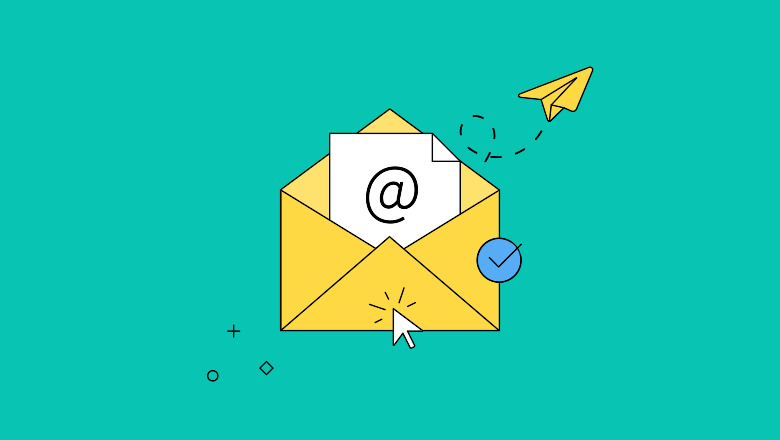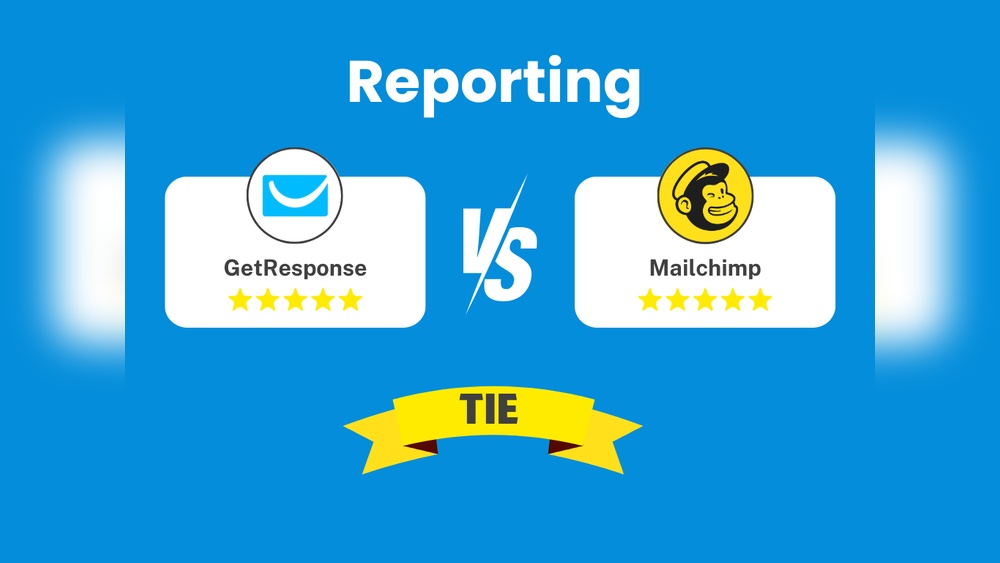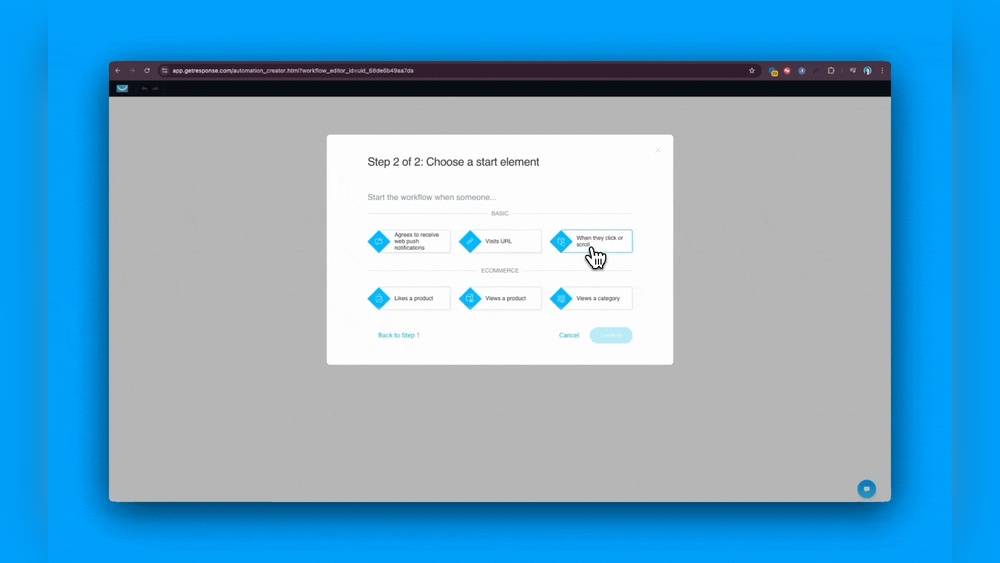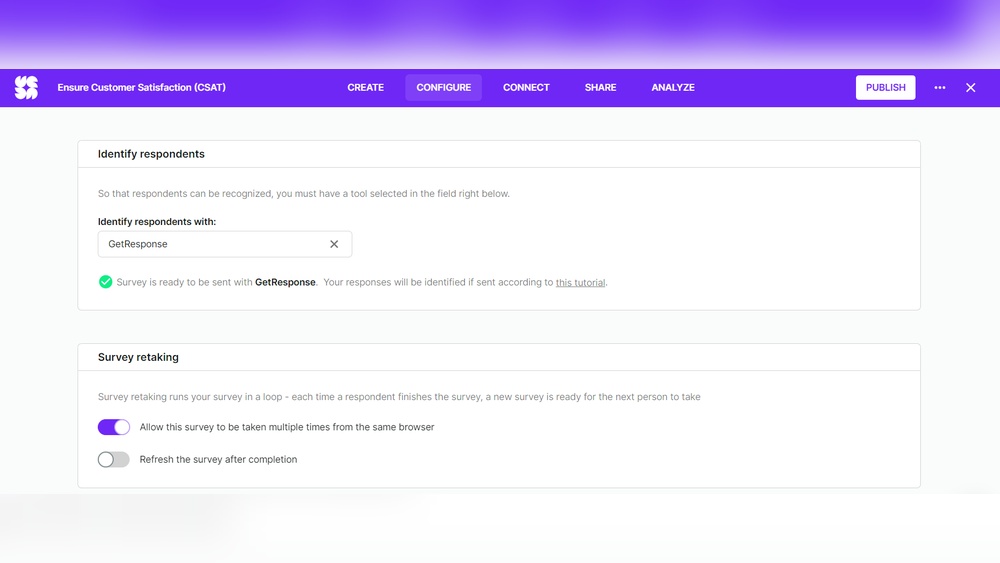Are you looking to boost your business without breaking the bank? Email marketing might be your answer.
It’s a powerful tool that lets you reach your audience directly, right in their inbox. Imagine being able to speak to your customers one-on-one, delivering messages they actually want to read. With email marketing, you can do just that. But how do you ensure your emails don’t end up in the dreaded spam folder, or worse, get ignored?
It’s all about strategy. By understanding what makes your audience tick, you can craft messages that not only grab attention but also drive action. Whether it’s promoting a new product, announcing a sale, or simply engaging with your audience, mastering email marketing can transform your business. Dive into this guide and discover the secrets to email marketing success. Learn how to create compelling content, build a loyal subscriber base, and turn casual readers into lifelong customers. Get ready to take your email marketing game to the next level.

Credit: www.geeksforgeeks.org
Crafting Compelling Subject Lines
Crafting compelling subject lines can boost email marketing success. Short, clear, and intriguing lines grab attention quickly. Effective subject lines lead to higher open rates and engagement.
Crafting compelling subject lines is crucial for successful email marketing. They serve as the gatekeepers to your emails, determining whether your message gets opened or ignored. A well-crafted subject line can significantly boost your open rates and engagement.Understand Your Audience
Knowing your audience is the first step in crafting subject lines that resonate. Think about their interests, problems, and desires. What grabs their attention? If your audience consists of busy professionals, a subject line like “Quick Tips for Productivity” might catch their eye. Tailor your message to their needs, and they’re more likely to click.Keep It Short And Sweet
Subject lines that are too long often get cut off, especially on mobile devices. Aim for 6-10 words or around 50 characters. Shorter subject lines are easier to read and understand quickly. Remember, your goal is to capture attention immediately.Create A Sense Of Urgency
Urgency can motivate action. Use phrases like “Limited Time Offer” or “Ends Tonight” to prompt immediate responses. However, be genuine. False urgency can erode trust with your audience. Ask yourself, “Is there a real reason for urgency?” If yes, communicate it clearly.Personalize Your Message
Adding a personal touch can make your subject line stand out. Include the recipient’s name or reference their past interactions. For instance, “John, Check Out Your Personalized Recommendations!” shows attention to detail. Personalization can make your email feel more relevant and engaging.Test And Analyze
Testing is key to understanding what works best. Try A/B testing different subject lines to see which ones perform better. Analyze open rates and engagement metrics to gather insights. What patterns do you notice? Use these insights to refine future subject lines.Crafting compelling subject lines takes practice, but the effort pays off. Engage your audience with clear and relevant messages. What strategies have you found successful in your own email campaigns? Share your experiences and continue to experiment!Personalization Techniques
Email marketing is a powerful tool, but success often hinges on personalization techniques. By tailoring your messages to your audience’s preferences and behaviors, you can significantly boost engagement and conversion rates. Personalized emails make your subscribers feel valued and understood, creating a stronger connection and encouraging them to take action. Let’s explore some effective personalization techniques to elevate your email marketing strategy.
Using Customer Data
How well do you know your subscribers? Customer data is your secret weapon in personalization. Start by gathering basic information like names, location, and purchase history. This data allows you to craft emails that speak directly to each subscriber’s needs and interests.
Ever received an email addressing you by name? It feels more personal, right? Use this technique to grab attention immediately. You can also tailor content based on previous purchases. If someone bought a camera, suggest accessories they might need. This approach makes your emails relevant and useful.
Segmenting Your Audience
Imagine sending a winter coat promotion to someone living in a tropical climate. It wouldn’t make much sense, would it? Segmenting your audience helps avoid such mismatches. Divide your subscribers into groups based on factors like location, age, or shopping behavior. This way, you can send targeted messages that resonate with each group.
Consider your own experiences with emails. Those that align with your interests are more likely to catch your eye. Use segmentation to ensure your emails are timely and pertinent. Create segments for loyal customers, new subscribers, or those who haven’t engaged in a while. Tailor your message to each segment’s unique characteristics.
Are you ready to make your email marketing more impactful? Personalization is the key. By using customer data and segmenting your audience, you can create emails that truly resonate. Start implementing these techniques today, and watch your engagement soar!
Designing Eye-catching Templates
Crafting eye-catching templates is key in email marketing. They grab attention and make messages stand out. Use vibrant colors and clean designs to engage readers. Keep text concise to maintain interest.
Creating email templates that grab attention is an art and a science. The goal is to design emails that not only look great but also drive engagement. Think of your email as a first impression; you want it to be memorable, functional, and persuasive.###Mobile-friendly Designs
Over half of all emails are opened on mobile devices. If your template isn’t mobile-friendly, you’re missing out on a huge audience. Use responsive designs that adjust automatically to different screen sizes.Test your emails on various devices before sending them out. It’s frustrating to zoom in on text or scroll sideways to read an email. Keep your text concise and your images scalable to ensure a seamless user experience.###Incorporating Visual Elements
Visual elements make emails more engaging and easier to digest. Use images, GIFs, and videos to break up text and keep readers interested.Choose visuals that align with your brand and message. A well-placed image can highlight a key point or evoke an emotional response.Remember, visuals should enhance your message, not overshadow it. Too many graphics can slow down load times and distract from the call to action.Consider this: Would you rather read a long, plain email or one with compelling visuals? The answer is clear, so make sure your emails catch the eye and hold interest.Designing eye-catching templates isn’t just about aesthetics. It’s about making your emails effective marketing tools. What changes can you make to your email templates today to improve engagement and conversions?Content That Captivates
Email marketing thrives on captivating content. Grabbing attention is the first step to success. Your audience receives countless emails. Standing out is crucial. Engaging content keeps readers interested. It encourages them to take action. Let’s explore how to craft compelling messages.
Creating Value-driven Messages
Focus on what your audience needs. Offer solutions to their problems. Provide insights they can’t find elsewhere. Use clear language. Avoid jargon. Share tips and advice. Be concise yet informative. Every word should serve a purpose. Personalize messages where possible. Address the reader directly. Make them feel valued.
Balancing Text And Images
Visuals enhance your message. They break up large blocks of text. Images should relate to your content. Choose high-quality visuals. Avoid cluttered layouts. Text should be easy to read. Use headings and bullet points. Keep paragraphs short. This increases readability. Test different formats. Find what works best for your audience.
Timing And Frequency
Email marketing can be a powerful tool for businesses, but success hinges on understanding the right timing and frequency. When you send your emails matters as much as what you include in them. You want your emails to be opened and read, not buried in a cluttered inbox. Striking the right balance between sending too many emails and not enough can make or break your strategy.
Optimal Send Times
Finding the perfect time to send your email can feel like hitting a moving target. But research shows that emails sent during midweek mornings often perform best. People tend to check their emails during lunch breaks or right after starting their workday.
Try sending your emails at 10 AM on a Tuesday or Wednesday. Test different times and analyze your open rates. What works for one audience may differ for another. Even small adjustments can lead to significant improvements.
Think about your own habits. When do you usually check your emails? Use that insight to inform your strategy. The goal is to catch your audience when they’re most likely to engage.
Maintaining Consistency
Consistency builds trust and expectation. If your audience knows they’ll receive valuable content from you regularly, they’re more likely to engage. Decide on a frequency that aligns with your content and audience needs. Weekly newsletters can work well.
Too many emails can feel overwhelming. Space them out enough to keep your audience interested but not annoyed. Monthly updates might be too infrequent unless packed with valuable insights.
Reflect on your own experiences. Have you ever unsubscribed from a brand because they emailed too often or too little? Use this understanding to gauge your frequency. Ask yourself: What is the right rhythm that keeps your audience looking forward to your emails?
Balancing timing and frequency is crucial. It requires ongoing testing and refinement. Stay attentive to your audience’s preferences and adjust accordingly. A personalized approach can transform your email marketing from good to great.
Call-to-action Strategies
Effective email marketing hinges on well-crafted call-to-action strategies. The call-to-action, or CTA, guides your audience towards a desired outcome. It could be a purchase, a download, or a subscription. Engaging CTAs boost engagement and conversion rates. They turn passive readers into active participants.
Crafting Clear Ctas
A clear CTA stands out. Use simple and direct language. Avoid jargon or complex words. Phrases like “Buy Now” or “Learn More” are effective. They tell the reader exactly what to do next. Make sure your CTA aligns with the email’s content and purpose.
Visual appeal matters. Use contrasting colors for buttons. Ensure the text is easily readable. A visually striking CTA grabs attention. It encourages action without overwhelming the reader.
Placement And Testing
Place CTAs strategically within your email. Early placement catches the eye. Readers decide quickly whether to engage. Consider multiple CTAs for lengthy emails. They keep the action visible throughout.
Testing is crucial. Experiment with different CTA placements. Use A/B testing for effectiveness. Track which positions yield higher clicks. Adjust based on the data to optimize performance.
Testing also applies to language. Try varying the wording. Measure which phrases get better responses. Continuous testing refines your strategy. It maximizes your email marketing efforts.
Automation And Workflow
Automating email marketing streamlines processes. Personalization boosts engagement and opens. Scheduling ensures consistent reach. Analytics improve strategies, helping refine content for better results. Efficient workflow saves time and increases productivity.
Email marketing has evolved tremendously with the advent of automation and workflow. Instead of sending one-off emails, you can now create sophisticated campaigns that nurture leads and convert them into customers. Automation saves time and ensures your messages reach the right audience at the right time. But how do you set up these automated campaigns effectively? Let’s dive in.###Setting Up Automated Campaigns
Automated campaigns allow you to schedule emails based on specific triggers. These triggers might include a new sign-up, a purchase, or even a website visit. By setting up these campaigns, you can engage with your audience without manual intervention.Start by choosing an email marketing platform with robust automation features. Look for options that offer a user-friendly interface and reliable customer support. Once you’ve selected a platform, define your campaign goals clearly. Are you aiming for more sales, increased engagement, or perhaps boosting brand awareness?Map out your customer journey. Identify the key touchpoints where automated emails can add value. For example, a welcome series for new subscribers sets a positive tone. Keep your emails short and relevant, and always include a clear call-to-action.###Using Drip Campaigns Effectively
Drip campaigns are a powerful way to nurture leads over time. They consist of a series of pre-written emails sent at specific intervals. This strategy helps keep your brand top-of-mind without overwhelming your subscribers.To use drip campaigns effectively, segment your audience based on their behavior and preferences. Tailor your messages to address their specific needs. For instance, if someone abandoned their shopping cart, send a reminder with a special discount.Timing is crucial in drip campaigns. Avoid bombarding your subscribers with too many emails in a short period. Instead, space them out to maintain interest and engagement. Evaluate the performance of each email in your series. Adjust the content and timing based on open rates and feedback.Have you ever received a perfectly timed email that led you to make a purchase? That’s the power of a well-executed drip campaign. It’s about delivering the right message at the right time, creating a seamless experience for your audience.Are you ready to harness the potential of email automation for your marketing efforts? Start small, analyze results, and iterate. Your future self will thank you for taking this proactive approach.Analyzing And Optimizing
Analyzing and optimizing are crucial steps in email marketing. It’s not enough to just send emails; you need to understand how they perform and make improvements. This process can transform your email campaigns from good to great, maximizing engagement and conversions. It’s like cooking a dish and tasting it every step of the way to ensure it’s just right. Let’s delve into some practical strategies for analyzing and optimizing your email marketing efforts.
Tracking Key Metrics
Tracking key metrics is your roadmap to understanding email performance. Focus on open rates, click-through rates, and conversion rates. These numbers tell you how your audience is interacting with your emails. Are they opening them? Are they clicking through to your site?
Use tools like Google Analytics or Mailchimp to gather this data. It gives you a clear picture of what works and what doesn’t. If your open rates are low, maybe your subject lines need tweaking. If clicks aren’t converting, perhaps the content isn’t resonating.
A/b Testing For Improvements
A/B testing is a powerful tool for optimization. It allows you to compare two versions of an email to see which performs better. Small changes can make a big difference. Test different subject lines, images, or call-to-action buttons.
It’s like trying two different recipes to see which tastes better. You might be surprised by what your audience prefers. Use the insights from A/B testing to refine your strategy. It’s about continuous improvement and learning what resonates with your audience.
Have you ever tested different email strategies and discovered surprising results? It’s thrilling to find a tactic that boosts engagement. Share your insights and learn from others in your industry. Email marketing is not static; it evolves with your audience.
Are you ready to dive into your email analytics and start optimizing? Embrace the challenge and watch your email marketing soar.
Building And Growing Your List
Effective email marketing begins with building a strong subscriber list. Keep content relevant and engaging to maintain interest. Share valuable insights to nurture relationships and grow your audience over time.
Email marketing is a powerful tool, but it all starts with a robust email list. Building and Growing Your List is not just about numbers; it’s about creating a community that trusts you and wants to hear from you. This is the foundation of any successful email marketing strategy. Let’s dive into some practical ways to expand your list while ensuring its quality.Strategies For List Expansion
Growing your email list requires creativity and persistence. First, leverage your existing platforms. Place sign-up forms on your website, blog, and social media. A simple invitation to join your newsletter at the end of a blog post can be surprisingly effective.Consider offering incentives. People love free stuff! You might offer a free e-book, discount, or exclusive content. Ensure these incentives are valuable to your audience. Think about what made you sign up for newsletters in the past. Use that insight to craft your offers.Collaboration is another smart strategy. Partner with like-minded businesses to cross-promote each other’s lists. This helps you reach a wider audience who are already interested in similar content.Ensuring List Quality
A large list is not always a good list. Quality matters more than quantity. Start by ensuring your sign-up forms are clear and concise. This helps attract subscribers who are genuinely interested in your content.Make it easy for subscribers to opt out. You want them to stay because they find your content valuable, not because they feel trapped. When people unsubscribe, see it as a chance to improve your approach rather than a setback.Regularly clean your list. Remove inactive subscribers who haven’t engaged in months. This keeps your list fresh and engaged. It also improves your email deliverability rates, ensuring your messages reach active inboxes.Consider this: Would you rather have 10,000 subscribers who never open your emails, or 1,000 dedicated readers who engage with each message? Focus on creating content that resonates with your audience. This will naturally lead to a high-quality list.Building and growing your email list is an ongoing process. What strategies have worked best for you? Are there any you’re curious to try? Engaging with your audience and learning from their feedback will keep your list dynamic and valuable.
Credit: sproutsocial.com
Compliance And Best Practices
Email marketing is a powerful tool for businesses. But following rules and best practices is crucial. Compliance ensures that your emails reach their intended audience. It also protects your brand’s reputation. Let’s delve into important compliance aspects.
Understanding Gdpr And Can-spam
GDPR and CAN-SPAM are key regulations in email marketing. GDPR stands for General Data Protection Regulation. It applies to businesses dealing with EU citizens’ data. It requires clear consent from your subscribers. They must know what they are signing up for.
CAN-SPAM is a U.S. law. It sets rules for commercial emails. It requires you to include a valid physical address. Also, an easy way for recipients to unsubscribe is mandatory. Violating these laws can lead to heavy fines.
Ensuring Deliverability
Email deliverability means getting emails to inboxes, not spam folders. Use reputable email service providers for better deliverability. Clean your email list regularly. Remove inactive or incorrect addresses. This practice improves your sender reputation.
Personalize your emails. Use the recipient’s name and relevant content. This increases engagement. Engaged subscribers are more likely to receive your emails in their inbox.

Credit: sproutsocial.com
Frequently Asked Questions
How Do You Do Email Marketing?
To do email marketing, build an email list. Create engaging content, personalize messages, and segment your audience. Use a reliable email marketing platform. Monitor analytics to optimize performance and ensure compliance with regulations.
What Are The 5 T’s Of Email Marketing?
The 5 T’s of email marketing are Targeting, Timing, Technique, Testing, and Tracking. Target your audience precisely. Send emails at optimal times. Use effective techniques to engage subscribers. Test different strategies to improve results. Track performance metrics to refine campaigns.
What Are The 4 P’s Of Email Marketing?
The 4 P’s of email marketing are Personalization, Permission, Privacy, and Performance. Personalization involves tailoring content to recipients. Permission requires obtaining consent before sending emails. Privacy ensures data protection and security. Performance focuses on analyzing and optimizing email campaigns for better results.
Conclusion
Email marketing builds strong connections with your audience. It delivers value and boosts engagement. Tailor your messages for better results. Make sure your content is relevant and timely. Personalization can make a big difference. Keep testing and learning. Understand what your audience needs.
Effective subject lines grab attention. Remember to keep messages clear and concise. Consistency is key in maintaining relationships. Track your progress and adjust your strategy. Email marketing can grow your business. Stay committed and success will follow. Keep improving your approach for long-term benefits.
Your efforts will pay off with persistence and creativity.






